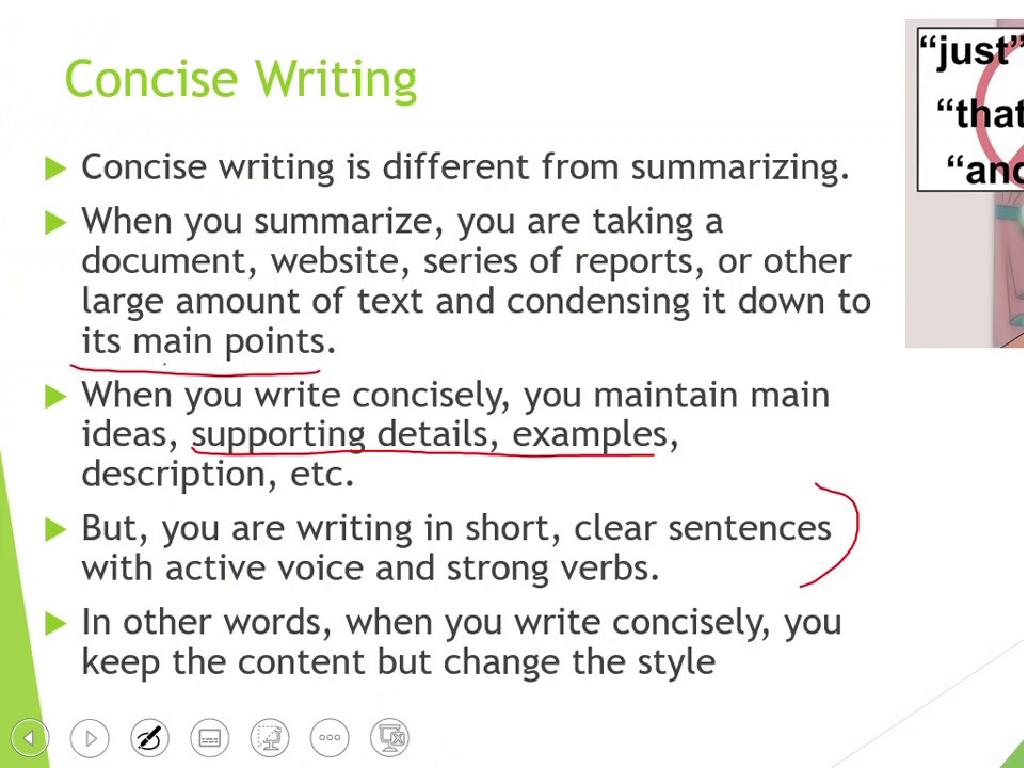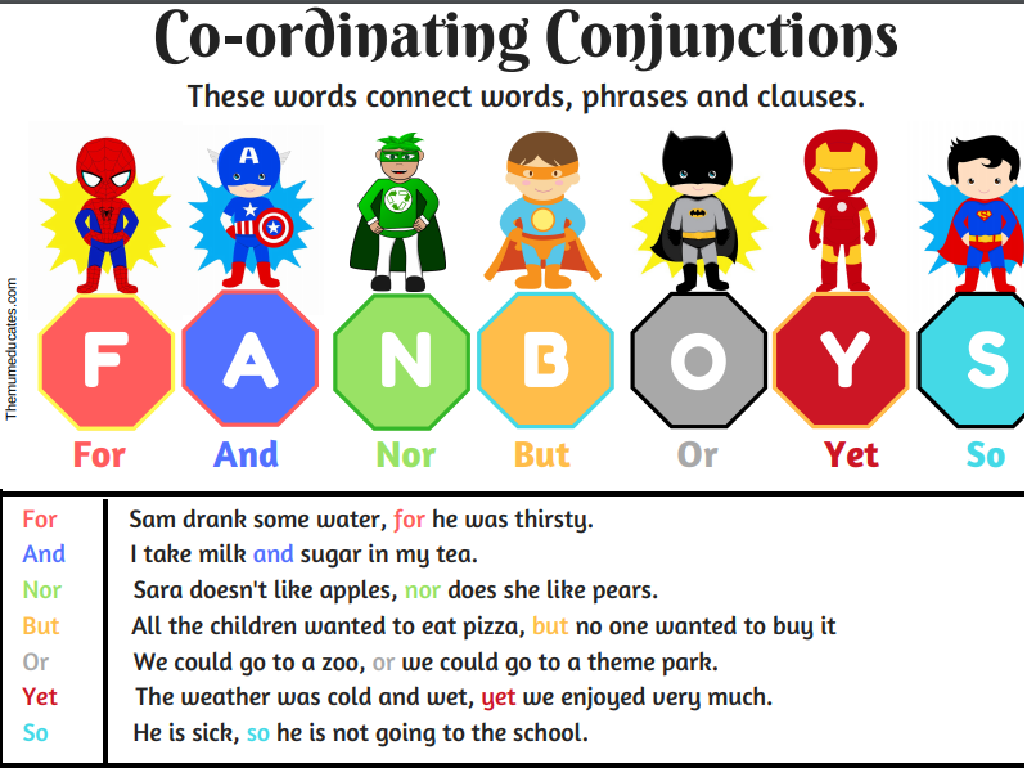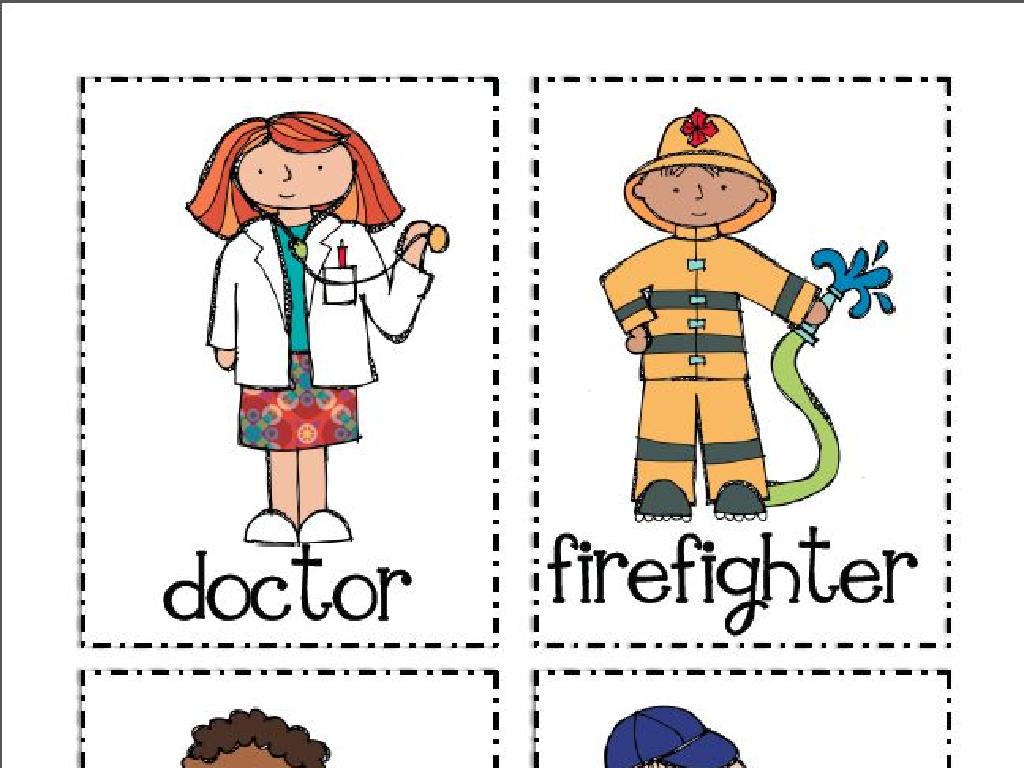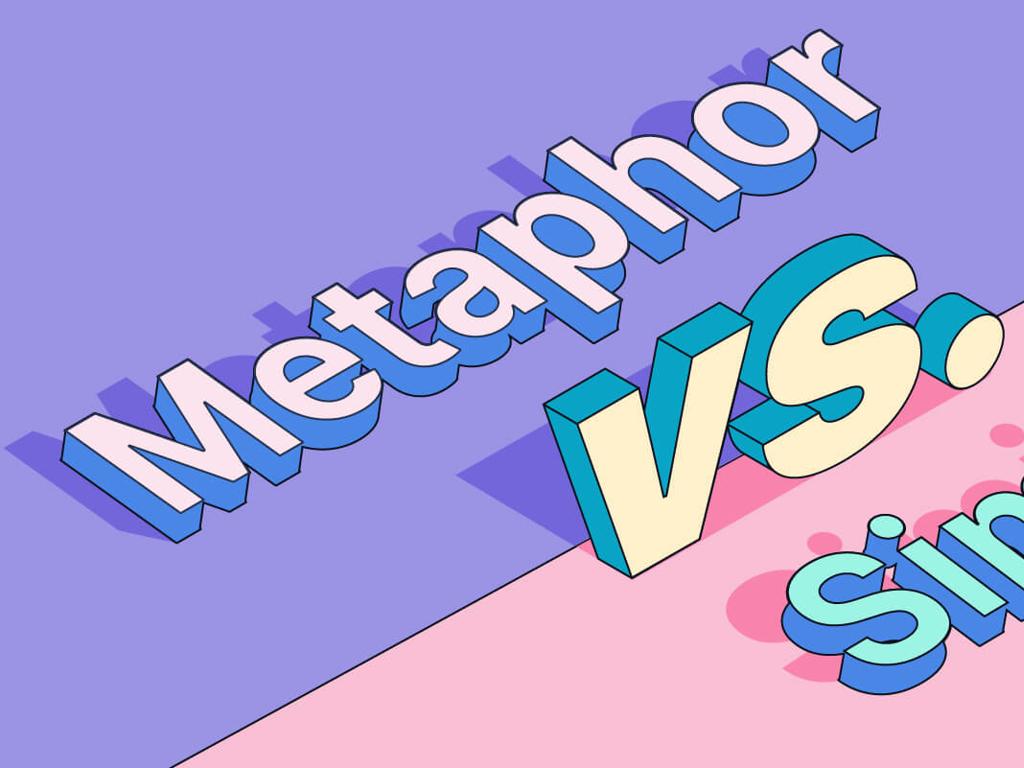Use Academic Vocabulary In Context
Subject: Language arts
Grade: Fourth grade
Topic: Context Clues
Please LOG IN to download the presentation. Access is available to registered users only.
View More Content
Welcome to Context Clues!
– Today’s Adventure: Understanding Words!
– Discovering Context Clues
– Clues in sentences that help us define new words
– The Value of Context Clues
– They help us read smarter and learn new vocabulary
– Applying Context Clues
– Use surrounding words and sentences to figure out meaning
|
This slide introduces the concept of context clues to fourth-grade students, emphasizing their role in understanding and learning new words. Begin by engaging students with the idea that they are going on an adventure to become word detectives. Explain that context clues are hints found within sentences that can help us figure out the meaning of words we don’t know. Discuss why context clues are important, highlighting how they improve reading comprehension and expand vocabulary. Encourage students to practice by looking at example sentences and identifying words that give context. Provide guidance on how to use context clues effectively, such as looking for synonyms, antonyms, explanations, or examples in the text. The goal is to empower students to become independent readers who can deduce word meanings from the text.
Understanding Academic Vocabulary
– Definition of academic vocabulary
– Words often found in textbooks and exams
– Examples of academic words
– Words like ‘analyze’, ‘compare’, ‘contrast’
– Significance of academic vocabulary
– Helps in better understanding of school material
– Strategies to master these words
– Use context clues, word parts, and dictionaries
|
Academic vocabulary refers to the words that are commonly used in the classroom and on tests, which are crucial for students to understand in order to grasp the concepts being taught. Provide examples such as ‘hypothesis’, ‘evidence’, and ‘conclusion’ to illustrate the type of vocabulary we’re discussing. Emphasize the importance of these words in understanding instructions, questions, and texts in school. Offer strategies for students to learn these words, such as looking for context clues in sentences, breaking down words into roots and affixes, and using dictionaries or glossaries. Encourage students to practice by identifying academic vocabulary in their readings and using the words in their own sentences.
Types of Context Clues
– Definition clues in sentences
– The new word is explained right there in the sentence.
– Synonym clues for understanding
– A word with a similar meaning is used for clarity.
– Antonym clues offer contrast
– An opposite word is used to highlight the meaning.
– Example clues for explanation
– Specific examples are provided to illustrate the word.
– Inference clues from context
– Gather hints from what you know about the story or facts.
|
This slide introduces students to the different types of context clues that authors use to help readers understand new vocabulary. Definition clues provide a direct explanation within the sentence. Synonym clues use similar words to give meaning. Antonym clues use opposites to define by contrast. Example clues offer concrete illustrations that shed light on the word. Inference clues require readers to pull from their own knowledge and the information given in the text to surmise the meaning. Encourage students to look for these clues when they encounter unfamiliar words and to use them as a strategy to improve their vocabulary and reading comprehension skills.
Using Context Clues with Academic Vocabulary
– Spotting context clues
– Look for hints around the unknown word that give clues to its meaning.
– Practice with examples
– We’ll look at sentences and find clues together.
– Partner discussions
– Explain to your partner how the clues helped you.
– Understanding word meanings
|
This slide is aimed at teaching students how to use context clues to determine the meaning of academic vocabulary. Start by explaining what context clues are and how they can appear in a sentence, such as synonyms, antonyms, explanations, or examples. Then, provide students with sentences containing new vocabulary and guide them through identifying the context clues. After the practice, have students pair up to discuss their findings, which reinforces their understanding and allows them to learn from each other. The goal is for students to become more independent in deciphering the meaning of unfamiliar words, which is a critical reading comprehension skill.
Let’s Practice Together: Context Clues
– Read the sentence aloud
– Spot the academic vocabulary
– Look for words that are specific to a subject
– Use context to define the word
– Clues include synonyms, antonyms, examples
– Discuss our definitions
|
This slide is for a class activity aimed at enhancing students’ ability to use context clues to determine the meaning of academic vocabulary. Start by reading a sentence from a chosen text on the screen. Guide students to identify words that are specific to academic subjects or are more formal versions of words they already know. Then, help them use context clues such as synonyms, antonyms, or examples in the sentence to infer the meaning of the academic vocabulary. After students have attempted to define the word, discuss the definitions as a class to ensure understanding. This activity will not only improve their vocabulary but also their critical thinking skills.
Group Activity: Context Clue Detectives
– Find academic vocabulary in a passage
– Use context clues for meanings
– Look for hints around the word that explain it
– Discuss findings with your group
– Talk about different clues you found
– Share with the class
– Each group will present their words and meanings
|
This group activity is designed to enhance students’ understanding of academic vocabulary through the use of context clues. Divide the class into small groups and provide each with a short passage containing several academic vocabulary words. Instruct students to identify these words and use context clues words or phrases around the unfamiliar term to infer the meaning. After discussion within their groups, each group will share their vocabulary words, the context clues they used, and the meanings they inferred with the rest of the class. This will not only help them understand the words better but also improve their collaborative and presentation skills. For the teacher: Prepare passages in advance, ensure they are appropriate for the grade level, and contain clear context clues. Be ready to guide discussions and clarify any misconceptions.
Class Activity: Crafting Sentences with Clues
– Pick an academic vocabulary word
– Write a sentence with context clues
– Use words around it that give hints to its meaning
– Exchange sentences with a peer
– Guess the meanings of each other’s words
– Try to figure out your friend’s word using their sentence
|
This activity is designed to enhance students’ understanding of using context to determine the meaning of unfamiliar words. Start by explaining what academic vocabulary is and why it’s important. Provide examples of academic words. Guide students to write meaningful sentences that include context clues such as synonyms, antonyms, or explanations. After writing, students will trade their sentences with a classmate and attempt to infer the meaning of the chosen word from the context provided. This exercise will help students practice inferring word meaning from context and also reinforce their understanding of academic vocabulary. Possible academic words to use could include ‘analyze’, ‘cite’, ‘compare’, or ‘contrast’. Encourage creativity and discussion among students as they solve the clues.
Wrapping Up: Context Clues & Homework
– Recap: Why context clues matter
– Homework: Discover 5 academic words
– Find words that are new or challenging
– Write sentences with context clues
– Use the words in original sentences
– Share your sentences next class
– Get ready to discuss how you used clues
|
As we conclude today’s lesson, remind students of the importance of using context clues to understand the meaning of new or difficult words. For homework, they should find five academic words in their reading book and write their own sentences using these words, making sure to include context clues. Encourage creativity and the use of different types of context clues such as definitions, synonyms, antonyms, and examples. In the next class, students will have the opportunity to share their sentences and explain how the context clues provided meaning. This exercise will reinforce their understanding and application of context clues in reading comprehension.






